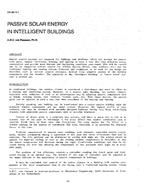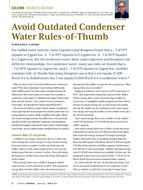This study compares the fungal populations present on the airstream surfaces of fibrous glass insulation, bare galvanized metal, and closed cell foam insulation, which were all subjected to the same environmental conditions over a five-year period. This study shows that fibrous glass liners have fungal levels thousands of times higher than galvanized metal or closed cell foam insulation when exposed to the same environmental conditions. The porous fibrous glass insulation with its rough surface is more likely to hold onto organic debris from the airstream than bare galvanized metal or closed cell foam insulation. Fungi in high moisture areas can feed on this collected organic debris. Porous fibrous glass insulation in contact with the airstream surface can become a reservoir of fungal organisms, which can be a source of elevated levels of fungal organisms in the occupied space. Elevated levels of fungal organisms can degrade the air quality for building occupants. Galvanized metal and closed cell foam insulation have smooth surfaces, which are less likely to collect debris and encourage fungal growth. Galvanized metal and closed cell foam insulation are better choices for interior ductwork surfaces than fibrous glass insulation, especially in high moisture areas such as near cooling coils and humidifiers.
Authors: Paul J. Ellringer, P.E., S.C. Hendrickson, Chin S. Yang, Ph.D., Katy Boone
Citation: Indoor Air Quality 2001 Moisture, Microbes, and Heath Effects: Indoor Air Quality and Moisture in Buildings Conference Papers
Keywords: November, California, 2001, IAQ
Citation: IAQ Conference: IAQ 2001
Product Details
- Published:
- 2001
- File Size:
- 1 file , 65 KB
- Product Code(s):
- D-8152


